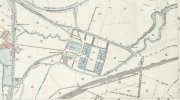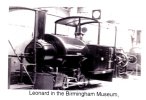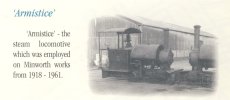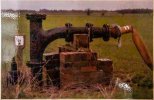I called into Claymills Victorian Pumping Station, Burton today to have a chat to some of the staff and try to locate a photo I had seen a while back showing the rising mains that distributed the sewage across the farms. Here is it below.
View attachment 178236
Once there was an established link between cholera and water in the mid nineteenth century, the various boards of heath began building organised clean water and sewage disposal infrastructures. These evolved over time to meet the rising demands of the growing nearby towns, but the basic principals were similar.
Sewage was collected, usually by gravity to low lying land. The sewage was them pumped via a system of distribution mains to risers in the various fields in the sewage farm. These typical farms were over 800 acers as with the Burton and Minworth farms. The untreated sewage, that had been mangled up into a slurry at the pumping station was run over a field to a depth of 5 inches or so, then left to dry in the warmer weather. The surplus water would slowly drain into the soil below, eventually finding its way into the river Trent through land drains etc. The sewage company would then plough the field and plant a crop in it. There would be a rota of fields in the various states of treatment.
You can see on the map below the various fields used for treatment.
View attachment 178237
Complaints about the smells made the sewage company’s try other methods. One was the plough the sewage slurry directly into the ground with flexible pipes connected to ploughing traction engines. They also mixed lime with the sewage to abate smells.












